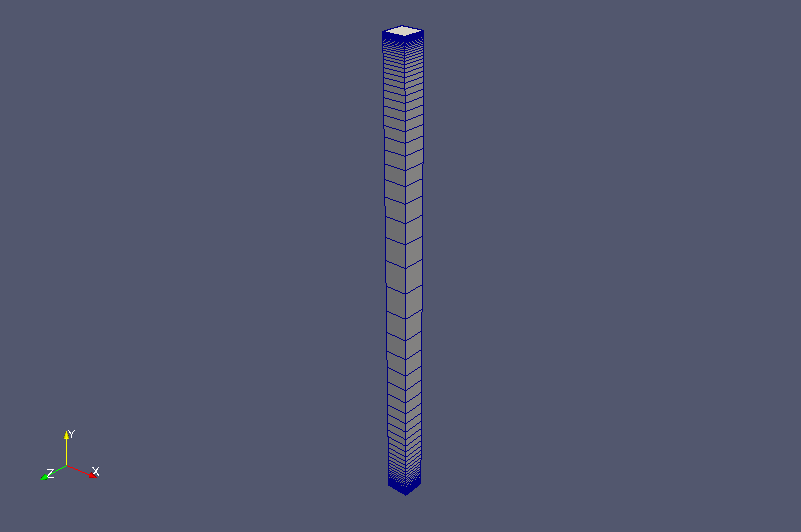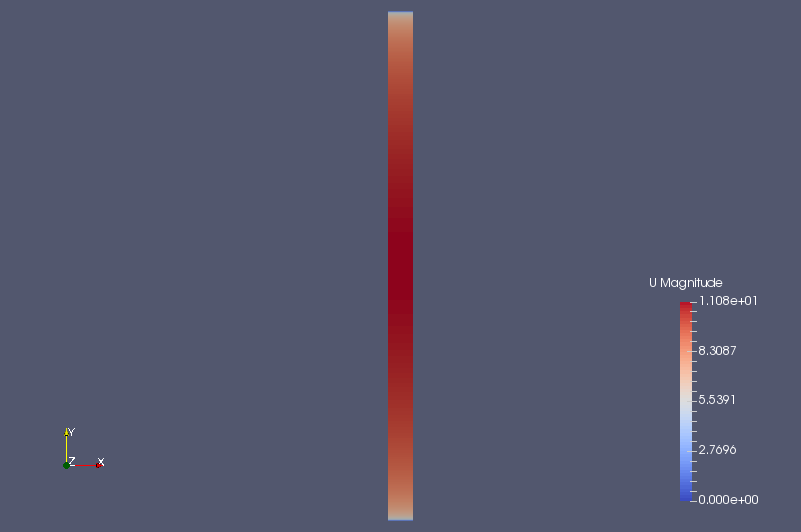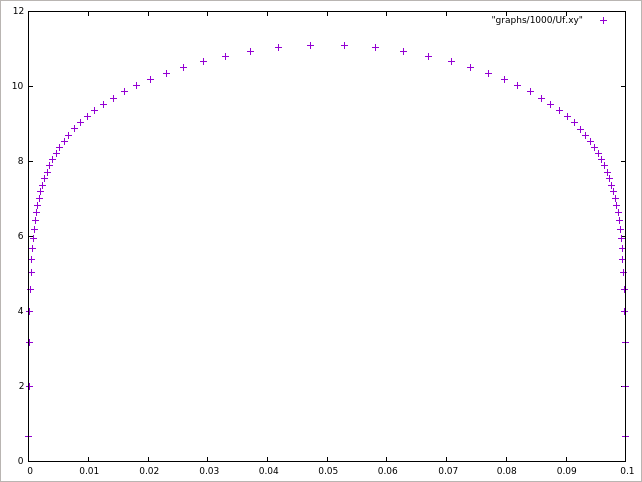Creating distributions for boundary conditions by a low Reynolds number k-ε model
Case directory
$FOAM_TUTORIALS/incompressible/boundaryFoam/boundaryLaunderSharma
Summary
With The Launder-Sharma low Reynolds number k-ε model, we will calculate the flow to use it as boundary conditions in another calculation. Periodic boundary conditions are set for the inflow region "front" and outflow region "back", and no-slip wall conditions are set for the "lowerWall" and "upperWall" regions, which are the channel walls. The mesh is created only in the Y direction and the calculation is performed as a 2-dimensional model.
The target average velocity of 10 m/s is specified in the file constant/transportProperties as follows.
Ubar [0 1 -1 0 0 0 0] (10 0 0);
See "SimpleFoam: Backstep flow with inflow distribution" for information on how to use calculated flow data as boundary conditions.
The meshes are as follows.
 Meshes
Meshes
The calculation result is as follows.
 Flow velocity (U)
Flow velocity (U)
 Distance from the wall vs. Flow velocity
Distance from the wall vs. Flow velocity
Commands
cd boundaryLaunderSharma
blockMesh
boundaryFoam
# Visualization in 3D
paraFoam
# Visualization in chart
gnuplot
gnuplot>plot "graphs/1000/Uf.xy"
Calculation time
2.17 seconds *Single, Inter(R) Core(TM) i7-2600 CPU @ 3.40GHz 3.40GHz